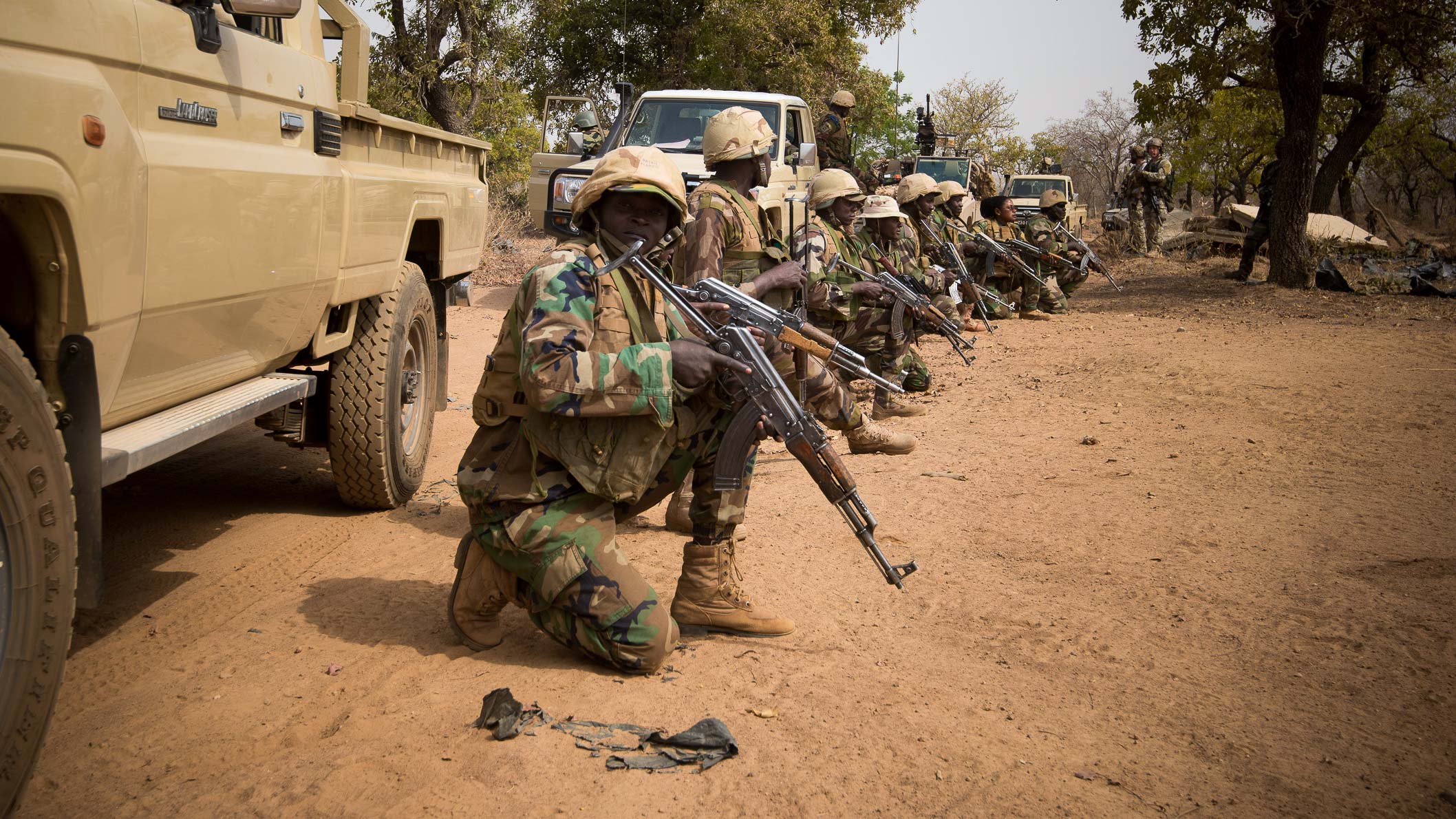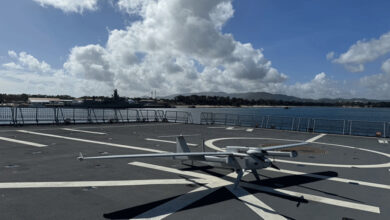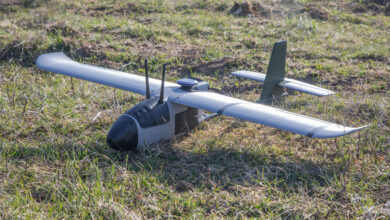At least 25 Niger soldiers, 63 ‘terrorists’ killed in attack on army base in Tillaberi region
Insurgents attacked a military base in Niger on Thursday, January 9, leading to clashes that killed at least 25 soldiers and 63 “terrorists,” the defense ministry said.
The raid began at 1 p.m. (1200 GMT), when “terrorist elements on board several vehicles and motorcycles” attacked a military outpost at Chinagodrar in the western Tillaberi region, the ministry said in a release.
RFI reported that the attack came from two directions – heavily armed vehicles came from west of Chinagodrar, while “several dozen motorcycles” came from the Ikrafane forest east of the base.
The ministry’s provisional assessment was 25 dead and six injured on the “friendly side,” and “63 terrorists neutralized” and several motorcycles burned on the enemy side.
Chinagodrar (also rendered Chinagodar, Chinagoder , Chinegodar and Sinegodar) is around 12 km (7 miles) south of the volatile frontier with Mali.
“The response with the combined air support of the Niger air force and partners made it possible to carry out strikes and rout the enemy outside our borders,” the defense ministry said, adding that clearance operations were ongoing.
According to the RFI report, both U.S. and French aircraft responded to the incident. According to the report, French Mirage 2000 fighter jets were scrambled and were over Chinagodrar within 15 minutes, and U.S. drones conducted two strikes – one struck vehicles on the Mali border and a second targeted a group of motorcycles.
However, U.S. Africa command told The Defense Post that no airstrikes were conducted in Niger or Mali.
Update January 10 French airstrikes played a “decisive” role in repelling the attack on Chinagodrar, a Nigerien security source told AFP.
“Air intervention by our allies, especially the French, played a decisive role,” the source said. “The heavily-armed terrorists arrived in large numbers by motorbike and in cars.”
The French army said in a Friday statement that the intervention “followed an alert put out by the Nigerien army at 1:00 pm,” adding that a patrol of Mirage 2000s then tracked the attackers “and forced them to flee.
Update January 11 Operation Barkane confirmed on Friday that a French Mirage patrol had conducted a show of force at Chinagodrar.
Citing four security sources, Reuters reported that at least 89 members of Niger’s security forces who were killed in the attack were buried Niamey on Saturday. One source said that others were buried in Chinagodrar after Thursday’s attack.
No new official toll was released.
Update January 13 The government on Sunday confirmed the death toll.
“After a thorough search, the toll has been established as 89 dead among friendly forces, and 77 dead for the enemy,” spokesperson Zakaria Abdourahame said on public radiio.
Three days of national mourning have been declared to honour the dead.
Update January 14 In a Tuesday statement, ISIS said fighters from its West Africa Province affiliate carried out the attack on the base in Chinagodrar, claiming that 100 Niger soldiers were killed and others wounded in clashes that “continued for hours.” It said the base’s barracks were burned, a number of vehicles were destroyed, and that weapons and ammunition were captured.
ISIS did not acknowledge the reported killing of dozens of its fighters, saying only that “the mujahideen returned to their positions,” although notably the statement did not use the usual wording that they were “unharmed.”

In a later release that included what it said were images captured during the attack, ISIS propaganda agency Amaq claimed that “tens” of soldiers were killed and wounded during the hours-long attack. The remaining soldiers “escaped alive, fleeing towards the desert, whence the Islamic State fighters pursued them and killed a number of others there.” Amaq claimed that a total of 100 Nigerien soldiers were killed and tens wounded.
It also reported a second attack “on the same day,” claiming ISIS fighters attacked Nigerien border guards in Sanam, east of Chinagodrar, “killing 14 soldiers and capturing various weapons and ammunition.”
According to the Long War Journal, this refers to a December 26 attack near Sanam that targeted security forces who were escorting a voter registration team. “Seven police and seven national guards” were killed, Niger’s interior ministry said.
ISIS also issued a statement claiming its fighters carried out the Sanam attack.
The Amaq release also noted that Niger replaced senior figures in its military leadership following the attack, and Monday’s summit in Pau where leaders of the G5 Sahel group of states and France announced a new Coalition for the Sahel that will focus on battling ISIS.
France has three armed Reaper drones and four Mirage 2000-D fighter jets deployed to its Operation Barkhane counter-terrorism mission in the Sahel. The aircraft are based near Niger’s capital Niamey, around 220 km southwest of Chinagodrar. U.S. drones fly from Air Base 101 at Niamey airport, and from Nigerien Air Base 201 in the northern city of Agadez. The CIA also operates a separate drone base in Niger.
The Chinagodrar attack in Niger’s Tillaberi region occurred around 180 km east of Inates, where 71 Niger soldiers were killed in a December attack claimed by Islamic State that saw dozens of insurgents storm a military camp near the border with Mali. It was the deadliest attack on Niger’s military since Islamist extremist violence began to spill over from neighbouring Mali in 2015.
The Inates attack spurred leaders of the Sahel nations to yet again call for closer cooperation and international support in the battle against the insurgent threat.
French President Emmanuel Macron and the leaders of the G5 Sahel group of states – Burkina Faso, Chad, Mali, Mauritania and Niger – are due to meet next week to discuss security and the presence of France-led forces in the region, a summit postponed until January 13 due to the Inates attack.
In November, Macron said France was “confirming and consolidating its commitment” to the Sahel, noting that additional military resources would be forthcoming by early 2020, and that decisions would soon be announced on revamping the G5 Sahel Joint Force (FCG5S).
Also in November, senior officials said the United States is seeking a meeting of the Coalition against ISIS early in 2020 to focus on threats in West Africa and the Sahel.
Islamist insurgency in Niger
One of the world’s poorest countries, Niger lies in the heart of the fragile Sahel region.
Niger faces insurgency on two fronts: the southeastern Diffa region near Lake Chad is increasingly frequently hit by Nigeria-based Islamic State West Africa Province insurgents, while militants based in Mali, including al-Qaeda-affiliated fighters, are active in the west of the country and the wider Sahel.
Attacks carried out by ISIS-affiliated militants in the Sahel have previously been attributed to Islamic State in the Greater Sahara but since May 2019, Islamic State has attributed insurgent activities in the Mali-Burkina Faso-Niger tri-border area to ISWAP, rather than ISGS.
But the majority of attacks in the Sahel are attributed to JNIM, which formed in March 2017 from a merger of several smaller groups. JNIM’s leadership has pledged allegiance to al-Qaeda leader Ayman al-Zawahiri.
Analysts note an escalation in the insurgents operational tactics, which seem to have become bolder and more complex in recent months.
The complex insurgency in the Sahel began in 2012, when a Tuareg separatist uprising was exploited by Islamist extremists linked to al-Qaeda who took key cities in Mali’s desert north. France began its Operation Serval military intervention in its former colony early the next year, driving the jihadists from the towns, and the MINUSMA U.N. stabilization mission was established.
But the militant groups have morphed into more nimble formations operating in rural areas, and the insurgency has gradually spread to central and southern regions of Mali and across the borders into neighboring Burkina Faso and Niger. Large swathes of Mali remain outside government control, and inter-ethnic bloodshed is a regular occurrence.
Serval evolved in August 2014 into Operation Barkhane, and roughly 4,500 French troops are deployed in the region, including around 2,700 soldiers in Mali. Barkhane focuses activity in insurgent-hit Mali, Niger and Burkina Faso, and troops work alongside other international operations, including the 14,000-strong MINUSMA U.N. stabilization mission in Mali and the G5 Sahel Joint Force, a long-planned 4,500-strong joint counter-terrorism force comprising troops from Burkina Faso, Chad, Mali, Niger and Mauritania.
Barkhane has a growing international dimension, with European partners sending more troops and equipment. Denmark has deployed two helicopters and up to 70 troops to support Barkhane and Estonia is to almost double the size of its Barkhane contingent this year. Chinook helicopters from the United Kingdom currently support the operation.
France has also been trying to build international support for a new military force to work alongside Barkhane.
French plans for a new international special operations task force for the Sahel were first reported in early October, and on November 5, Armed Forces Minister Florence Parly said that France expected the new force – dubbed “Takuba” – to deploy in Mali by 2020.
Estonia was the first partner to confirm a special operations forces deployment to Takuba. A defense ministry spokesperson told The Defense Post that special forces will deploy to Mali in the second half of 2020 and that force will ‘assist, advise and accompany’ the Malian Armed Forces. Belgium and the Czech Republic have also signaled that they will participate, but Germany has declined to join the task force.
With reporting from AFP. This post was updated on January 10, 11, 13 and 14.












